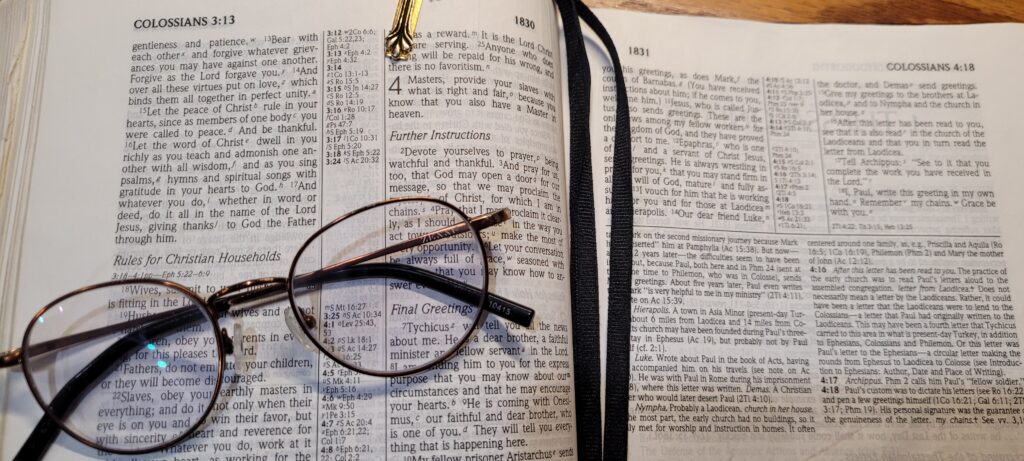I enjoyed doing children’s sermons in worship services. I did them every week for the vast majority of my ministry. I was able to draw on some things I had learned from my Elementary Education degree, but even more so from what I learned while student teaching.
Cheryl and I student taught at Our Redeemer Lutheran School in Staplehurst, Nebraska. At that time it was a three-room school: K-2, 3-5, and 6-8. The first 4 weeks I was in the 6-8 class and Cheryl was in the K-2 class. Everything went smoothly. I related to the students at that age level quite well. The next 4 weeks Cheryl went to the 3-5 class and I moved to the K-2 class. My first day in that classroom, a little fellow came up to me with his worksheet and said he didn’t know what to do. I asked him, “Did you read your instructions?” His eyes got big, his lip started quivering, and he said in a shaky voice, “Teacher, I’m in Kindergarten. I can’t read!”
That day I learned the importance of knowing your audience. Make sure you are speaking to them on a level they can understand. I was reminded of that a while back when we attended a service where the pastor was telling the children they should be holy. The problem was he never once tried to explain what that word meant.
The more I did children’s sermons, the more I learned to use words they could understand. You could tell by the expression on their little faces if they knew what you were talking about or not, so I would adjust what I was saying and the words I used. For example, I would never say in a children’s message, “The Incarnate Son of God is the propitiation for the iniquity of the world.” Instead, I would tell them, “God came to earth as one of us so that He could take our punishment and pay for our sins.” And even that might require some further explanation to make sure they understood.
I tried to take this approach with all children, even those who are considered adults. You have to be sure you are speaking to people in a way that they will understand the message you are sharing.
The language of our liturgy is beautiful and meaningful. However, I remember a visitor once asking me why I thought I had the right to forgive someone’s sins. These were the words I had said after the congregation had publicly confessed their sin together:
“Upon this, your confession, I by virtue of my office as a called and ordained servant of the Word, announce the grace of God unto you. And in the stead and by the command of my Lord Jesus Christ, I forgive you all your sins in the name of the Father and of the Son and of the Holy Spirit.”
I took a moment to go over the wording, and then I said, “Jesus wants me to tell everyone who admits they are sinful and trusts in Him that they are forgiven.” The visitor said, “Why didn’t you just say that?” He had a valid point. I understand the need to educate people about the historic liturgy and why we say what we do. I also know the importance of conveying the message clearly, whether that be in a sermon or an order of service or in a conversation over coffee.
Holy Spirit, guide and direct and lead us so that we share your message of love and grace and mercy for Jesus’ sake in a way that others will understand it.

